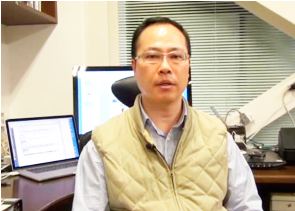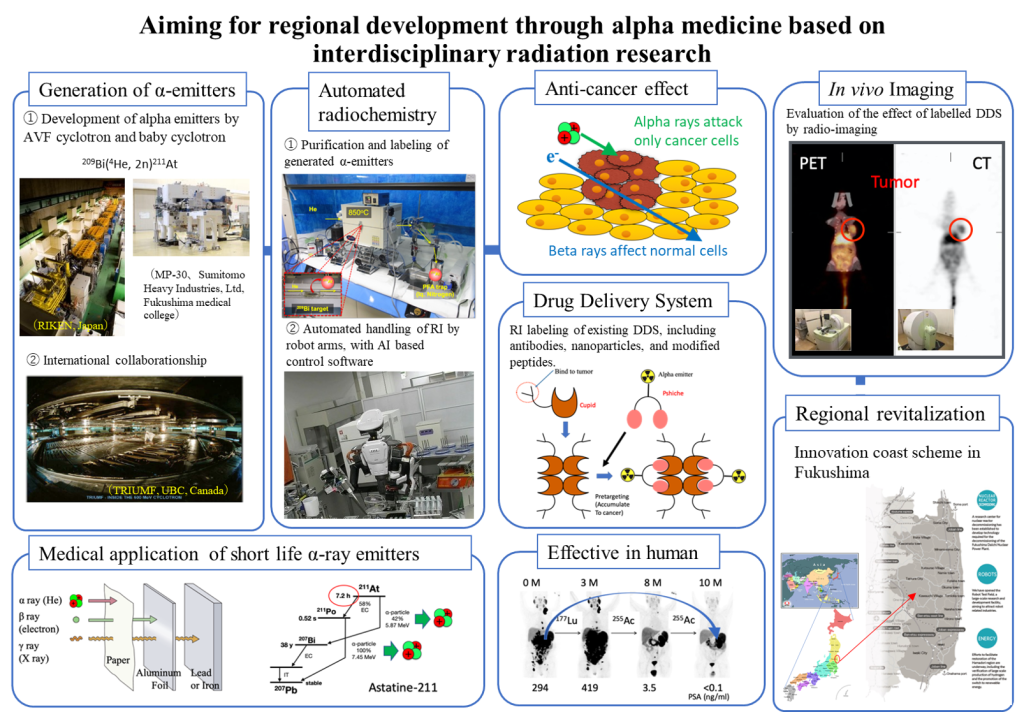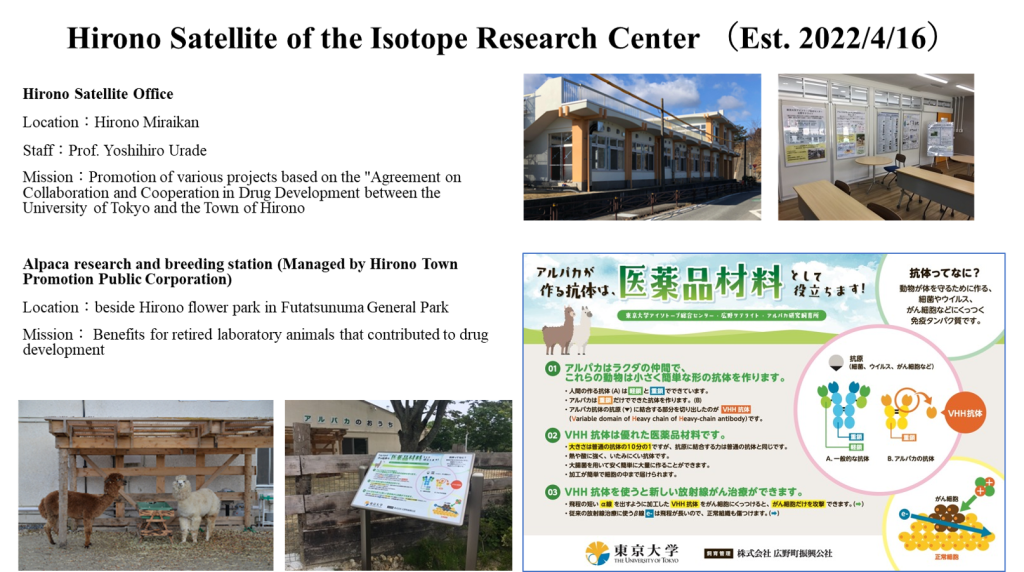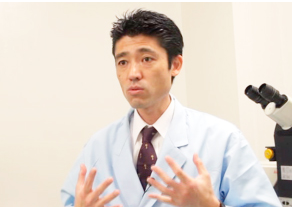Wada, Youichiro

Wada, Youichiro
Professor
First-Class Chief Radiation Protection Supervisor
Graduate School of Engineering, Department of Advanced Interdisciplinary Engineering (Research Center for Advanced Science and Technology)
Graduate School of Medicine, Molecular and Cellular Biology Concurrently
Assistant to the President (2016)
- Link for Research Center for Advanced Science and Technology
- Conventional link for the Center for Isotope Research
- University-wide link
Areas of expertise
Radiopharmaceutical development, Radiation Effects Science
Development of Alpha Radiation Drugs Using Robotic Systems
The development of pharmaceuticals using short-lived alpha-ray emitting radionuclides is progressing rapidly
About 1/3 of patients with cancer have advanced cancer with invasion of adjacent organs or distant metastasis at the time of initial diagnosis, so surgical resection and other treatments are not indicated. Currently, chemotherapy and immunotherapy are used for treatment, but the survival rate is still only 20%. In recent years, the effectiveness of nuclear medicine therapy, in which alpha-ray-emitting radionuclides are delivered directly to cancer cells, has been demonstrated as a treatment for such advanced cancer at the time of initial diagnosis, and drug development is currently progressing rapidly.
Since alpha rays have a short range, delivering alpha-ray-emitting nuclides specifically to malignant tumor cells using a drug delivery system with antibodies or peptides can attack only cancer cells with higher efficiency than other nuclides that emit gamma or beta rays, thereby reducing damage to normal cells. In addition, as a so-called "short-lived" nuclide with a short half-life, it quickly disappears after exerting its therapeutic effect, thereby reducing the exposure of normal tissues.
Safe and efficient handling of alpha-ray emitting nuclides by humanoid robots is necessary
For example, Astatin-211, an α-ray emitting nuclide, is produced and purified by irradiating Bismuth-209 with an α-beam using a cyclotron, and then chemically bound to antibodies and peptides used as a drug delivery system. In Japan, α-ray emitting nuclides must be controlled 20 times more strictly than other γ-ray and β-ray emitting nuclides by law, so in order to ensure the safety of workers involved in their use and to produce a large amount of astatine-211 in a stable manner to meet the increasing needs in the future, the efficiency of a series of operations must be greatly improved. In order to ensure the safety of workers involved in the use of astatine-211 and to produce astatine-211 in large quantities and in a stable manner to meet the growing needs of the future, it is necessary to greatly improve the efficiency of the series of operations.
We hope to solve this problem by automating the purification and labeling process. In the past, in collaboration with mathematical scientists, we have developed and experimented with humanoid robots that can perform rapid and accurate experimental operations to observe life phenomena in one-minute intervals, which is difficult for human researchers. We are currently working with accelerator, robotic, and medical scientists to automate the production, purification, and labeling of alpha-ray emitting nuclides using this robot technology. In addition, we are also working to implement accident prediction and autonomous optimization of production volume by implementing control technology using sensor systems by information engineering researchers and machine learning functions by mathematical scientists, aiming for even safer use of isotopes.
The development of alpha-ray drugs has various ripple effects
Useful isotopes, which are produced using accelerators based on the knowledge of nuclear chemistry and can be used for diagnosis and treatment, are being developed as pharmaceuticals together with various drug delivery systems, and the concept of their anticancer activity (POC) is being obtained for several biological products. We will continue our activities to bring these isotopes to market without delay, a process that is expected to have a variety of ripple effects. Drug delivery systems, which are currently centered on antibodies, are expected to be developed for a wide variety of carcinomas in the future, but the antibodies themselves are also expected to become more diverse. For example, unlike ordinary antibodies, there are antibodies that have no L-chain and are formed only with the H-chain, and the variable region of the H-chain is called the variable domain of heavy chain of heavy chain antibody (VHH) antibody. The VHH antibodies are only about 1/10th the size of ordinary antibodies, making them capable of recognizing antigenic sites that were previously hidden.
The cell targeting function of α-ray emitting radionuclides is currently being utilized to achieve a killing effect on malignant tumor cells, but it can also be applied to other disease areas such as lifestyle-related diseases through the removal of unwanted cells as they age. The need for medical isotopes is also expected to spur the development of accelerator manufacturing dedicated to their production.
In order to elucidate the cell-killing effects of isotopes, the kinetics of isotopes in the body must be studied. For this purpose, PET and SPECT have been used in the past, but the development of hardware is progressing. On the other hand, domestic production of new PET nuclides such as Zr-89 and SPECT nuclides such as Tc-99m has started.
The Isotope Center aims to promote the development, manufacturing approval, and marketing of radiopharmaceuticals in the reconstruction of the areas affected by the Fukushima disaster, as well as to foster new industries in the surrounding areas and contribute to regional industrial development by aiming for medical tourism based on advanced medical care using new technologies.

interdisciplinary radiation research

Competitive research funds related to this research
- FY2015 Challenging Exploratory Research
‛Evaluation of Radiation Effects Based on BRAF Gene Point Mutation Frequency" (Principal Investigator) - FY 2018-2020 Fundamental Research (B)
Development of robotic purification and labeling technology to reduce radiation exposure in short-lived α-ray pharmaceutical manufacturing processes" (Principal Investigator) - FY 2018-21 JST-OPERA
"Creation of Advanced Quantum Application Technologies for Realization of a Safe, Secure, and Smart Long-Lived Society" (Co-Principal Investigator) - FY2019 - 2021 Fundamental Research (B)
"Experimental study of internal irradiation therapy for peritoneal dissemination of gastric cancer using super-selective delivery short-lived α-rays" (Representative: Sachiyo Nomura) (Co-Principal Investigator) - FY2020 - FY2022 International Cooperative Research Acceleration Fund (Strengthening International Cooperative Research (B))
"Collaborative Research on Therapeutic Isotope Production and Radiopharmaceutical Synthesis" (Principal Investigator) - FY2023 - 2025 Fundamental Research (A)
"Development of novel radiopharmaceuticals using α-ray emitters and antibody-based drug delivery systems" (Principal Investigator)
